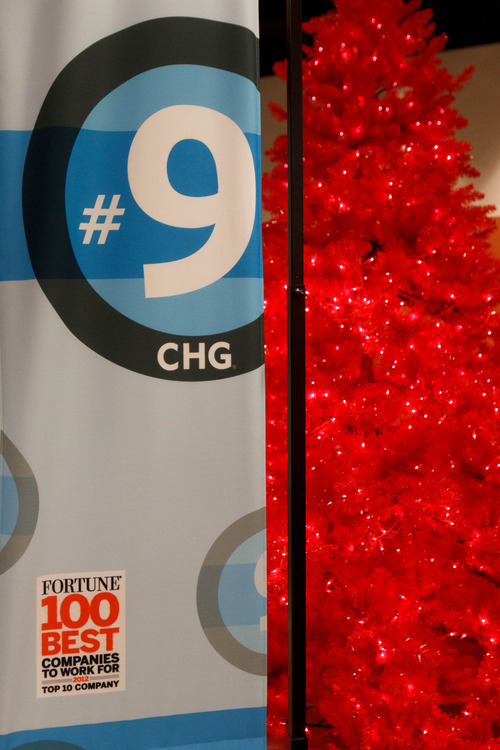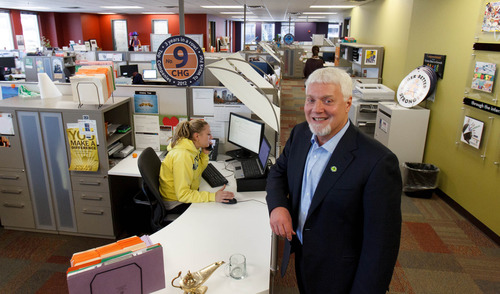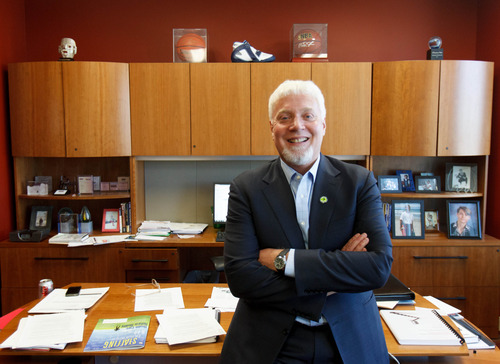This is an archived article that was published on sltrib.com in 2012, and information in the article may be outdated. It is provided only for personal research purposes and may not be reprinted.
Strong job growth continued to chip away at Utah's unemployment rate in November, persuading discouraged workers to leave the sidelines and rejoin the labor market, the Department of Workforce Services said Friday.
Statewide, the jobless rate fell to 5.1 percent from 5.2 percent in October. The last time the rate was lower was in November 2008, when it stood at 3.5 percent and the Great Recession was about to send Utah to a sharp turn for the worse.
The all-important count of jobs jumped 3.1 percent in November, compared with the same month of 2011, as 37,800 jobs were added over the 12-month period. It was the largest year-over-year employment gain since December of last year, when 36,300 jobs were added.
And the labor force participation rate, which had fallen from around 72 percent before the recession to a low of 66.1 percent at the beginning of 2012, inched up to 66.8 percent in November, the department said.
Nationally, the unemployment rate in November was 7.7 percent. Job growth was just 1.4 percent, and the U.S. labor force participation rate was 63.6 percent.
The year-over-year increase in employment is significant in another way — 3.1 percent has been the long-term average of job creation since the 1950s, according to Workforce Services.
Mark Knold, the department's top economist, said the growth rate probably is even higher right now. On Friday, he received the latest revision of job growth for the months of July, August and September from the U.S. Bureau of Labor Statistics. Instead of 2 percent for each of those months, the actual rates were 3.6 percent, 3.8 percent and 3.6 percent.
"The nice thing is it's very diverse, through the industrial categories in the state," Knold said of the November number. "The only category that is not growing is government, and you can break that down into federal, state and local. Growth is zero because of job losses at the federal level, but there were job gains at the state and local levels because of education."
Barring some calamity that rattles the economy, it's probable that Utah will continue to add jobs at a 3.6 percent to 3.8 percent clip until next spring, when homebuilding activity picks up. At that point, the rate could go even higher, Knold said.
"It looked like housing turned a corner in 2012 and was on a path to improvement. We expect that to blossom even more in 2013 with more homebuilding. That added construction will push [the rate] up into the 4 percent range, and possibly higher," Knold said.
Across the state, the professional and business sector added the most jobs over the past year — 11,000, or close to three of every 10 positions. That pattern was established months ago and won't change soon, if CHG Healthcare Services is a good measure of the sector's strength.
With revenue up 20 percent last year, to $750 million, the Holladay-based temporary staffing services company has been on a hiring tear. CHG has hired 100 to 200 people per year during the past three years and expects the pace to extend at least through 2013, CEO Michael Weinholtz said.
Privately held CHG bills itself as the largest temporary physician staffing company in the U.S. About 90 percent of the people it places at hospitals and clinics are back-up physicians who fill in when on-staff doctors go on sabbaticals or take other leaves of absence. The rest of the temporary staffers CHG provides are nurses, physical therapists and other health care workers.
"Because of the physician shortage [in the U.S.], there's been great demand for our services. So we've been hiring people to continue to pursue the growth opportunities that exist," Weinholtz said.
The company employs 1,550 people at offices around the country, including 830 workers in Holladay. Most of the hires are deployed as recruiters, client relations representatives and other internal staff. The physicians are independent contractors.
CHG occupies about 150,000 square feet of an office building in the Millrock corporate park. To house the hires expected next year and beyond, it plans to move into the rest of the building when the other tenant's lease expires in 2013. Helping to fuel the growth will be the mandatory health insurance requirement that goes into effect in 2014.
"With potentially millions of new patients who don't have insurance now, we see demand rising, and thereby demand for our services rising, as well," Weinholtz said.
Twitter: @sltribpaul









